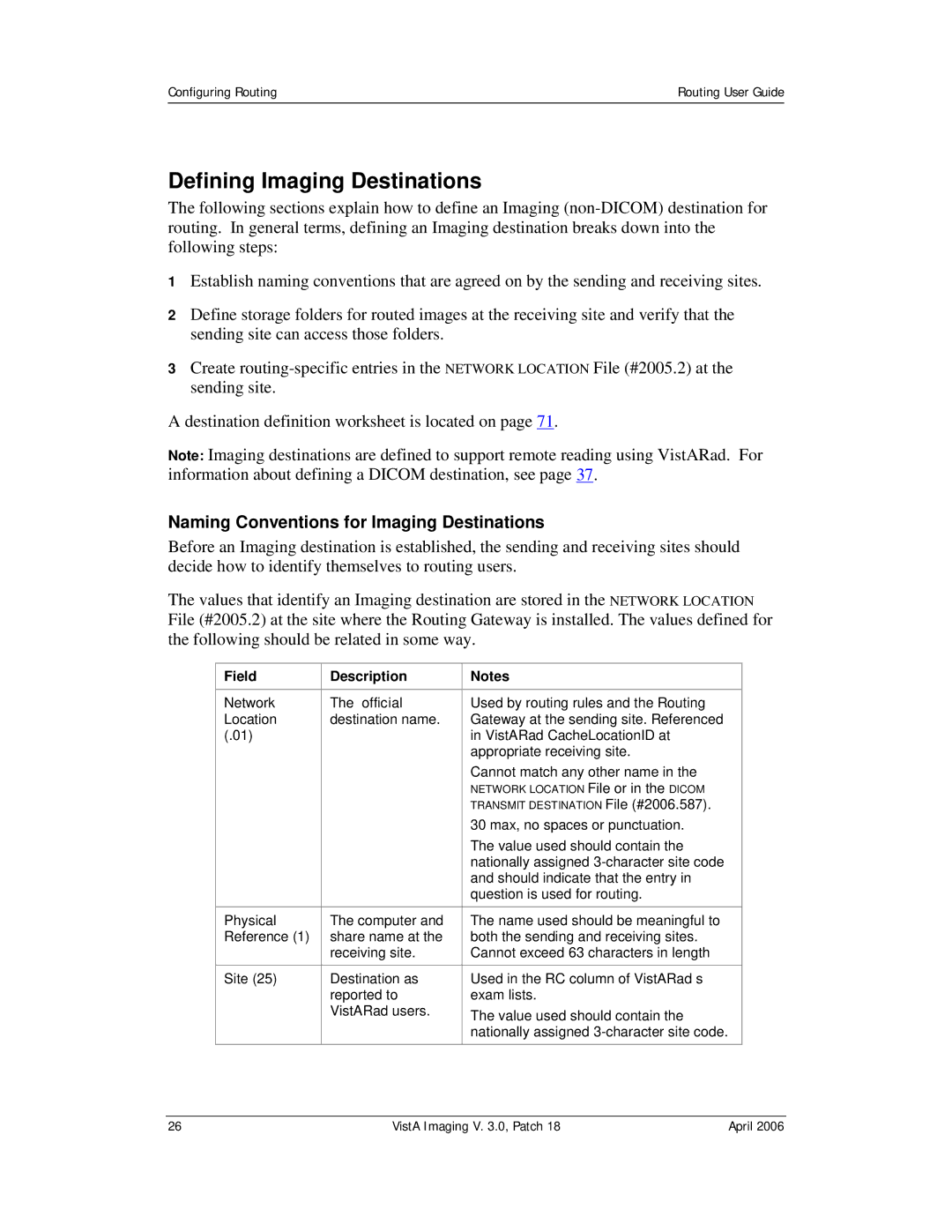Configuring Routing | Routing User Guide |
|
|
Defining Imaging Destinations
The following sections explain how to define an Imaging
1Establish naming conventions that are agreed on by the sending and receiving sites.
2Define storage folders for routed images at the receiving site and verify that the sending site can access those folders.
3Create
A destination definition worksheet is located on page 71.
Note: Imaging destinations are defined to support remote reading using VistARad. For information about defining a DICOM destination, see page 37.
Naming Conventions for Imaging Destinations
Before an Imaging destination is established, the sending and receiving sites should decide how to identify themselves to routing users.
The values that identify an Imaging destination are stored in the NETWORK LOCATION File (#2005.2) at the site where the Routing Gateway is installed. The values defined for the following should be related in some way.
Field | Description | Notes |
|
|
|
Network | The “official” | Used by routing rules and the Routing |
Location | destination name. | Gateway at the sending site. Referenced |
(.01) |
| in VistARad CacheLocationID at |
|
| appropriate receiving site. |
|
| Cannot match any other name in the |
|
| NETWORK LOCATION File or in the DICOM |
|
| TRANSMIT DESTINATION File (#2006.587). |
|
| 30 max, no spaces or punctuation. |
|
| The value used should contain the |
|
| nationally assigned |
|
| and should indicate that the entry in |
|
| question is used for routing. |
|
|
|
Physical | The computer and | The name used should be meaningful to |
Reference (1) | share name at the | both the sending and receiving sites. |
| receiving site. | Cannot exceed 63 characters in length |
|
|
|
Site (25) | Destination as | Used in the RC column of VistARad’s |
| reported to | exam lists. |
| VistARad users. | The value used should contain the |
|
| nationally assigned |
|
|
|
26 | VistA Imaging V. 3.0, Patch 18 | April 2006 |
